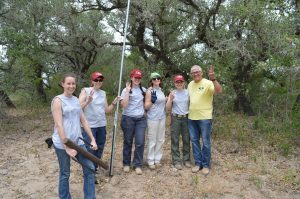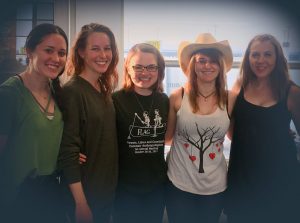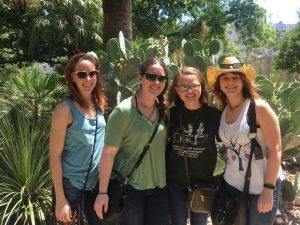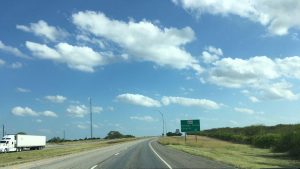We started and ended our day with a “divide and conquer” plan of attack. In the morning, by splitting the team in half so that one could search while the other repaired water stations. At the end of the day, by tackling the grocery store run at breakneck speed before going to get food at one of the few restaurants still open until 10pm here.
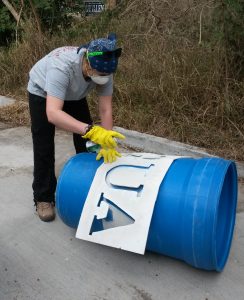
Erica and I were on the water station repair team with Eddie. After painting a handful of new barrels and running to Walmart for 100 gallon jugs of water (we had to ask for a pallet of cases), we loaded up the truck and headed out. After the huge accomplishment of the whole team building 13 stations on Monday, the three of us were pretty proud of ourselves for doing a route refurbishing and refilling 12 existing stations. Although Eddie had checked it just last week, we still ended up putting out 30 jugs of water – which means the barrels are well placed to be seen and used by migrants. Since most of the barrels were put on the route almost 5 years ago, we also spent a lot of time updating them: replacing barrels, cracked lids and dried out ropes, and stabilizing them with T-posts while taking down old flag poles for repair back at the STHRC.
Tuesday has been both the hottest and longest day we’ve had yet, starting with our alarms going off at 5:30 am. Wednesday, predicted to be even hotter, will start bright and early at 5am so we can get out on the ranch and continue searching as soon as there’s enough light.
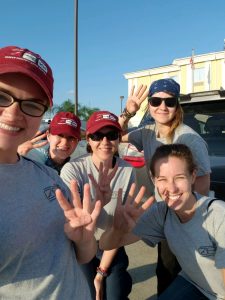
You can tell we’re halfway through the trip and starting to feel it, in the quietness at mealtimes and in the car as everyone conserves their energy and thoughts. For me, the mental strain is almost as strong as the physical – but while my body can be replenished fairly rapidly with food, water, and shade, being hyper-alert and mentally active for such long periods of time leaves me snatching moments of peace and quiet when I can find them to just “be”, without trying to remember all the things I feel like I keep losing track of, or constantly watching the brush for signs of human presence.
Two more days of work, and then a day of travel. Though it will be tough, I have no doubts our energy and sheer tenacity of will will carry us through these last few days. Wish us luck!




